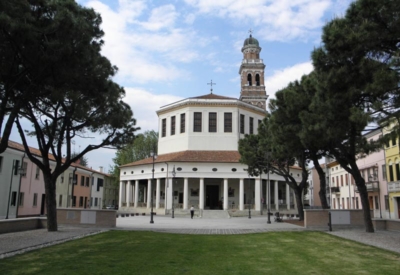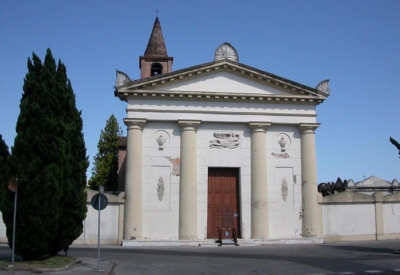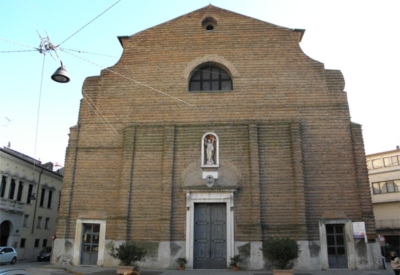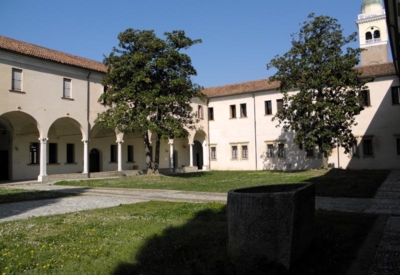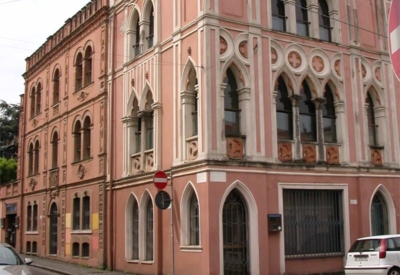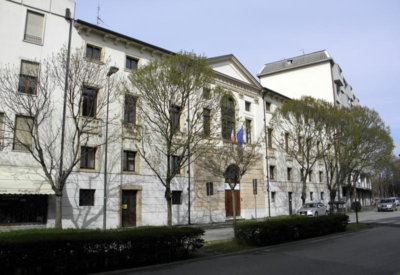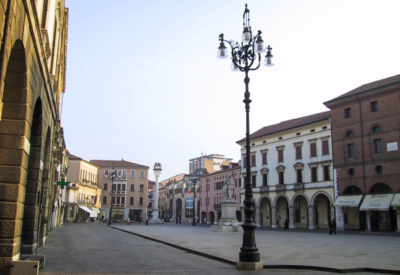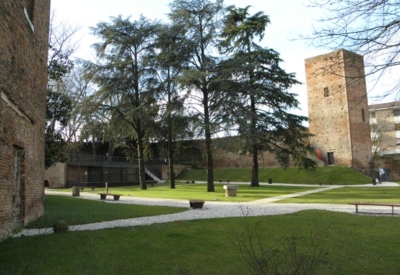ROVIGO
Rovigo is a very lively but at the same time peaceful town, like all small historic towns that have a pleasant atmosphere. Its history goes back a long way: it was certainly visited by ancient Venetians, Etruscans and later Romans, although it was founded in the 20th century. The Este family was already present in Rovigo in 1117, and apart from brief interludes, it remained under their domination for almost three centuries. There plenty of evidence of this important presence, like the 66-metre-high keep of the castle, now known as the Donà tower, which is one of the tallest mediaeval towers in Italy and was almost certainly the tallest brick tower of its time.
In 1482, it came under the rule of the Venetian Republic, which, in order to leave its mark, built Piazza Maggiore (now Piazza Vittorio Emanuele II), the town’s tower and the column with the Lion of St Mark, dated 1519.
In the early 19th century, after the fall of the Venetian Republic and the establishment of French rule, Rovigo underwent new social and cultural stimulus for growth and development. This was followed by Austrian rule, until its annexation to the Kingdom of Italy.
The main square, named after King Victor Emmanuel II, is surrounded by buildings that have a certain architectural contrast, testifying to the city’s various influences. Among the buildings overlooking it are the Loggia dei Nodari, where the town administration is located, Palazzo Roverella and Palazzo Roncale.
Next to the town hall is the Accademia dei Concordi, built in 1580, which has one of the finest picture galleries in Veneto that has recently moved to Palazzo Roverella. Works by Nicolò di Pietro, Bellini, Palma the Elder, Luca Giordano, Piazzetta and Tiepolo are housed here.
Next to Piazza Vittorio Emanuele II is Piazza Garibaldi with a bronze monument dedicated to Giuseppe Garibaldi by Ettore Ferrari, erected in 1896. Overlooking the square is the Teatro Sociale, a theatre opened on 1st March 1819 by Emperor Franz I of Austria, where the traditional opera season is held.
The oldest building is the medieval castle built by Bishop Paolo of Adria in 954, around which the city of Rovigo developed. It was initially a rudimentary fortification but after subsequent rebuilding it became an imposing castle with walls, towers and gates. Of the six gates only two remain today.
Worth Visiting
Duomo di Santo Stefano, the co-cathedral of the Diocese of Adria-Rovigo
The Church of Sant’Antonio Abate known as San Domenico. It was consecrated in 1543 and has been restored several times over the centuries. There are some noteworthy 17th and 18th century sculptures, like the bust of St. Anthony Abbot and the little statues of St. Paul and St. Sebastian. A work of the Eucharistic Adoration.
The Church of Sant’Antonio di Padova (20th century). This is one of the newest churches, built in the late 20th century to replace the earlier building from the 1950s.
The Church of Santa Maria delle Rose (20th century). This is another of the newest churches, built in the late 20th century. This parish church was built to meet the needs of believers in the Commenda Est neighbourhood.
The Olivetan Monastery
Palazzina Minelli (also known as the Palazzina Gotica, or the Gothic building). It was built by printer Antonio Minelli and features a neo-Gothic façade embellished with circular terracotta elements depicting some of the members of the Minelli family.
Palazzo Patella-Montalti (18th century). Located in Corso del Popolo but originally overlooking the Adigetto River, it was once the barracks of the Imperial Royal Gendarmerie of the Austrian Empire, then a seminary, and a home of public institutions and high schools including the Technical Institute for Surveyors.
Palazzo Roverella (15th century). Commissioned by Cardinal Bartolomeo Roverella, it remained partially unfinished due to his death. It overlooks Piazza Vittorio Emanuele II, formerly Piazza Maggiore.
The Castle, the original heart of the medieval city. Located on the modern-day Corso del Popolo and originally on the Adigetto River, it retains part of its original structure, including a large portion of the perimeter walls and the two towers that are symbols of the city
Torre Mozza or Torre Grimani
Torre Donà, built later
Salvadego-Sgarzi Palace

